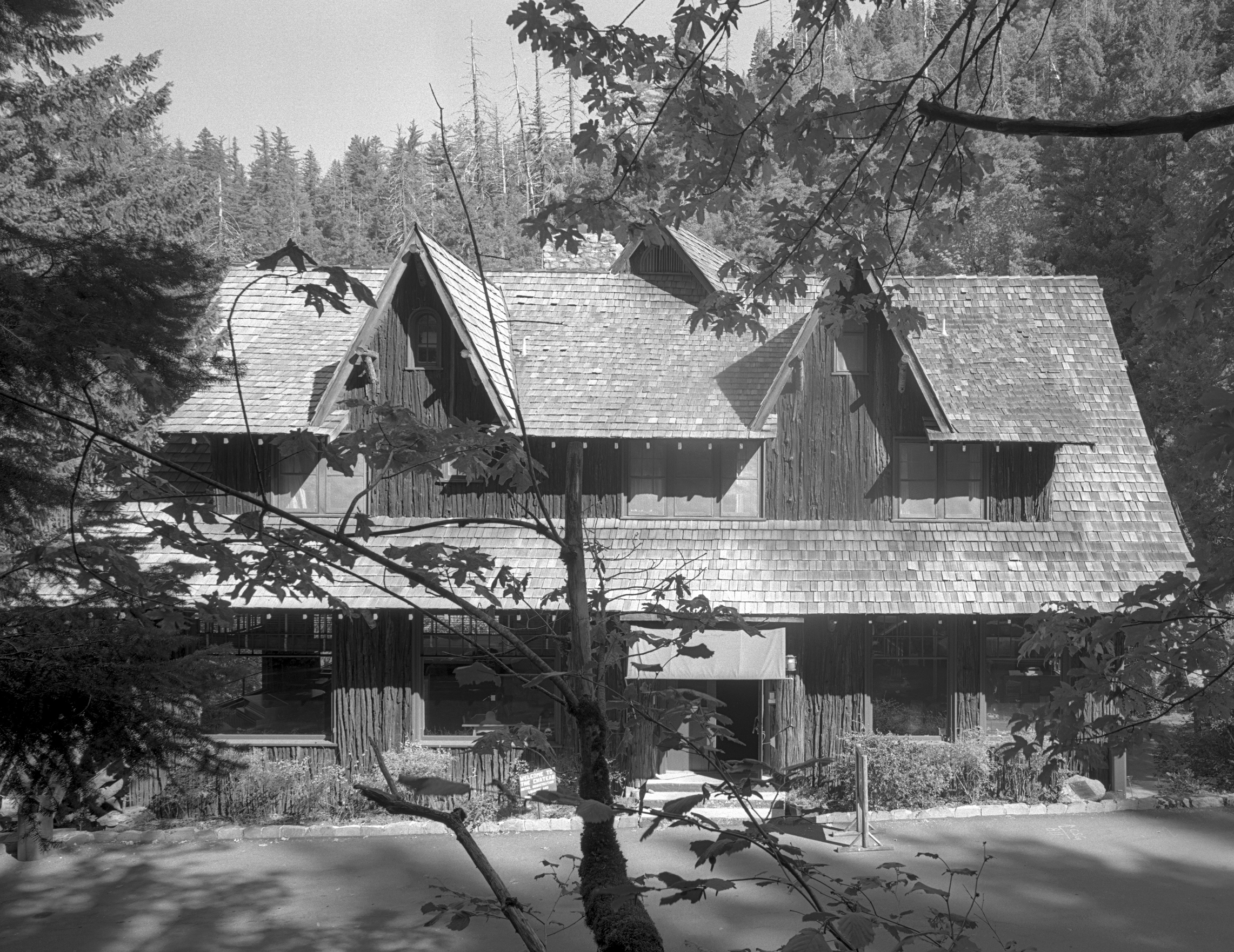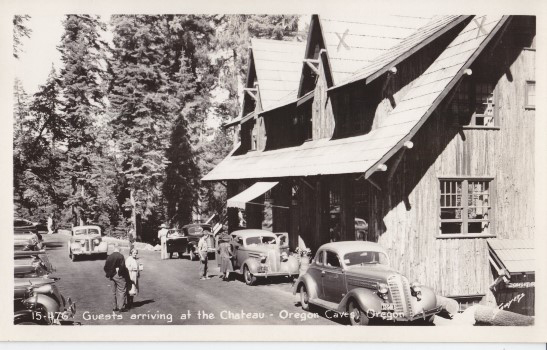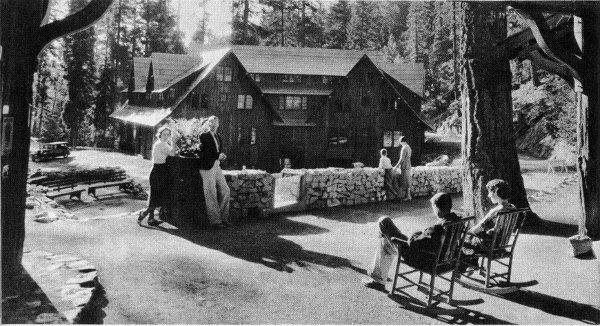Endangered Since 2016: Oregon Caves Chateau & Historic District
Cave Junction, Oregon (1924)
While significant progress has been made since first threatened, the Chateau is in need of more capital investment in order to re-open. Restore Oregon is a key partner on a Blue Ribbon Committee of local, state and national partners with the Friends of the Oregon Caves & Chateau to raise awareness, advocate, and be a strong voice for this incredible historic lodge until restoration is complete and it is once again, open and welcoming guests from all around the world.
We’ve been working with the Friends of the Oregon Caves & Chateau in our MEP program since 2016. They have requested a $455,690 grant to repair and restore the 97 remaining doors and their related hardware dating back to the Chateau’s original construction in 1933. Built in Cave Junction, the Chateau is one of the National Park’s Great Lodges and a National Historic Landmark. The six-story hotel has 23 rooms, a fine dining room and a 1930’s era coffee shop. The Friends have been working on preservation efforts to restore the doors, lighting fixtures, historic balconies and all of the interior Monterey-style furnishings, all while the National Park Service is rehabilitating the building itself. Once the restoration is complete, the Oregon Caves Chateau will be the only lodge in the National Park Service with its original furniture in each room, complimented by restored doors with their original hardware!

The Oregon Caves Historic District covers 60 acres in the main visitor area of the Oregon Caves National Monument and Preserve (OCNMP) in southwestern Oregon. In December 2014, Congress expanded the OCNMP from 430 acres to over 4000 acres. The Historic District includes four primary buildings plus two other structures. Because of the unique rustic architecture of these National Park Service buildings and the surrounding park landscape, the area was listed on the National Register of Historic Places in 1992 and listed as a National Historic Landmark.
Elijah Davidson discovered the Oregon Caves in 1874 while bear hunting near Sand Mountain (now renamed Mount Elijah after Davidson). While Native Americans may have known of the caves prior to Davidson’s discovery, no evidence of earlier exploration or use has been found. Thus, Davidson is credited with being the first person to enter the caves.
In 1907, Joaquin Miller visited the caves and wrote an article highlighting the cave’s unique beauty, which gave the caves national exposure. Under the Antiquities Act of 1906, the Federal Government ordered a site survey whose results, along with continued advocacy from Miller, caused President William Howard Taft to designate Oregon Caves a National Monument by 1909.
In 1923, local businessmen formed the Oregon Caves Company and took over the food services, overnight accommodations, and cave tours. The potential for the successful operation of a resort on the monument was increased when the first permanent road was completed in 1922. All the structures in the Historic District were designed and built by this private company’s personal investors. Gust Lium was the architect and builder. The CCC created the surrounding park landscape.


The buildings in the Oregon Caves Historic District illustrate “rustic-style architecture,” also referred to as “parkitecture”. All buildings have rough-cut Port Orford cedar-bark sheathing, wood-shingled roofs, and rustic stonework. These buildings give the impression that they just grew out of the ground. The four primary buildings include the Chalet, built in 1924 and reconstructed in 1942; the Oregon Caves Chateau, built in 1934; the Guide Dormitory, built in 1927 with major additions in 1940 and 1972; and the ranger residence, built in 1936. The structures all remain generally intact.
The Oregon Caves National Monument and Preserve is the home of the “Marble Halls of Oregon.”
Nestled deep inside the Siskiyou Mountains, the Caves formed as rainwater from the ancient forest above dissolved the surrounding marble creating a special marble cave system. The highly complex geology found on the Monument and Preserve contributes to the unusual and rare plants and animal life found here.
The Chateau (originally referred to as a “resort”) is critical to the region’s economic well- being. The OCNMP currently attracts over 90,000 visitors annually but, at its height in the 1970s attracted over 200,000, a decrease likely least partially attributable to the Chateau’s decline. A recent NPS economic study documents the Monument’s local economic impact at $5.18 million per year. That model notes that even a 10% increase in visits and overnight stays would bring an additional $6.68 million each year to the entire SW Oregon region, since the Caves is considered a gateway attraction. The nearest airport is in Medford, and other regional attractions include the Oregon Shakespeare Festival in Ashland, the Britt Music Festival in Jacksonville and Oregon’s only National Park Crater Lake. All these attractions including the OCNMP are a pleasant day trip from Medford.

